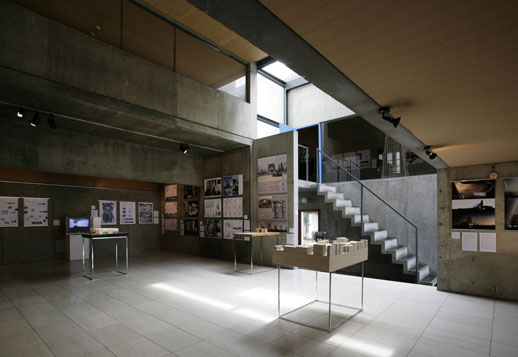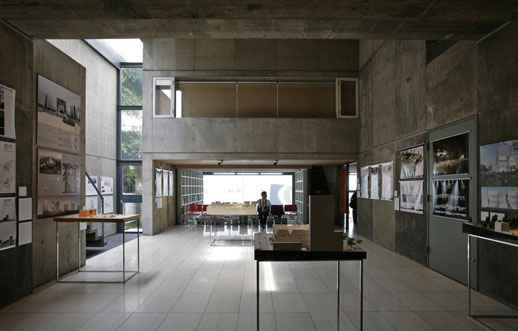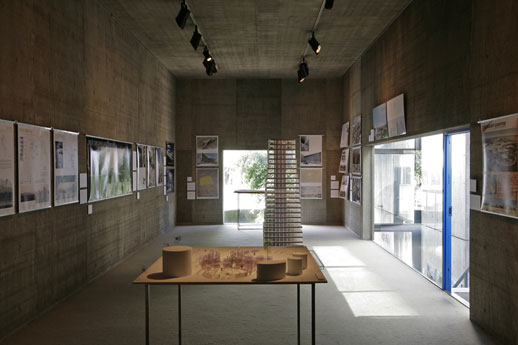3D:2D
Each year GA Gallery showcases the architectural projects that they have published over the past twelve months, and the link to the printed page is key to understanding this exhibition. Viewers may feel that they’re looking at pages torn straight out of a design magazine, blown up and hung on the gallery wall, though in fact each firm represented here provided its own presentation boards.

As a result, the show is a little uneven: OMA’s materials are text-heavy and aggressively hip, while those put together by the smaller, less sophisticated firms rely more on pretty pictures. Only the Japanese architects have provided architectural models, presumably because it’s easier to ship domestically than internationally, but the lack of three-dimensional work seriously hurts the exhibition. Why go to a gallery to see these projects, after all, if you can see it all in print?

One answer to that, of course, is that these buildings cannot actually be found in print — at least, not in the mainstream architectural press. Jean Nouvel’s slick residential tower in New York City, for example, will start construction next year but to date it has received surprisingly little attention. A few of the other firms are so small or so obscurely located that you might never hear of them at all: one of the most beautiful projects on view, a shimmering mirage of a cultural center in Saudi Arabia, was designed by a firm called Snøhetta that is little known outside its native Norway.
As for local talent, Kengo Kuma is represented here, as is Toyo Ito, whose design for a media center at University of California Berkeley is lusciously curvy. Visitors can also see Riken Yamamoto’s plans for a housing block in Korea and Arata Isozaki’s municipal office building for Hanoi — a cubic form echoed by a square reflecting pool.

No show of international architecture would be complete without a few starchitects thrown into the mix, and so here we find Zaha Hadid’s project for the Hong Kong Polytechnic University. More interesting is Peter Eisenman’s competition entry for the Sheikh Zayed National Museum in Abu Dhabi, a typically complex mesh of sunscreens, frames and enclosures. Eisenman likens the overall effect to an arabesque, evocative of the shifting patterns of the desert, but whatever the rationale, the interaction of the design’s many layers does yield a fascinating cross-section.
For serious fans of architecture, this show is a worthwhile opportunity to see GA’s recent publications and to get an encapsulated view of what’s happening in the world of architecture. For the rest of the viewing public, many of the complicated renderings may be difficult to understand without the help of models. If you’re okay with that, enjoy the eye candy and the feeling that you have seen the future… or at least a flat version of it.
Jessica Niles DeHoff
Jessica Niles DeHoff



